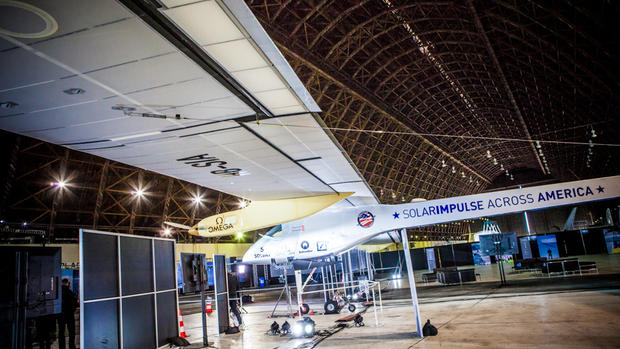How to "defy the impossible"? Ask these two guys
DAVOS, Switzerland -- When Solar Impulse Chairman Bertrand Piccard and CEO André Borschberg set out 12 years ago to create a plane that could fly around the world without fossil fuel or pollutants, the aviation industry deemed it impossible. But the psychiatrist-engineer duo was certain there would be a way forward -- and that it would mean taking a nontraditional approach.
"Of course, on one side, use different technologies, but...also develop a different kind of organization, different mindset, maybe different values, different culture," Borschberg said Wednesday on stage at the World Economic Forum's "Around the World without Fuel or Fear" presentation addressing innovation in clean energy.
Mindset was key for the Solar Impulse team to "defy the impossible," as Piccard put it.
"We understand that innovation is not a new idea," Piccard said alongside Borschberg on stage. "Innovation is an old belief we leave behind. If we understand this, we can go very far in changing the world, in improving the state of the world."
In addition to being a psychiatrist, Piccard is an aviator who became the first person to circumnavigate the globe nonstop in a balloon in 1999. Borschberg is an MIT-trained engineer and pilot.
"We are so different that we understood that creativity would come from the combination of both of our experiences," Piccard told CBS News senior producer Lulu Chiang.
To succeed during their 12 years of collaboration and friendship, Borschberg said the duo understood one important thing: "We always, very often have different ideas, but we understood that it would be stupid to convince the other one that our own idea is better. We tried to listen to the idea of the other one and see, in fact, by combining both, we can develop something even better than what we had in mind."
They changed their math so that "one and one equaled three," Piccard added. "Andre, me, and both of us."
Knowing they wanted to use carbon fibers for their aircraft, Borschberg came upon Swiss company Decision SA, whose yacht had won America's Cup. The company knew nothing about aviation, and Borschberg's engineers knew little about the carbon material. So it actually took more time to develop the team's organization than its technologies, Borschberg said.
"Took me two years to build bridges, to build the respect," Borschberg recalled.
Eventually, Solar Impulse created the solar-powered aircraft that took Borschberg from Japan to Hawaii, nonstop, over five days and five nights -- and broke the records for the world's longest solo flight.
To prepare for the risky journey, Borschberg maintained a positive outlook. "Instead of thinking...it was going to be very long, very difficult, I thought five days, five nights were just going to be enough, or maybe not enough to experience everything I wanted to experience," he said.
Borschberg looked to explore and discover. "When I arrived in Hawaii, I stayed long in the air, but I could have landed. I stayed another eight hours [aloft] because I really wanted to continue living on the experience that I was doing in this special flight," he recounted.
Piccard, born into a family of explorers, said the unknown stimulates creativity and gets people out of their comfort zones and "out of our certitudes."
"If we are dependent and prisoner of what we have learned, we never have the choice to choose. We are prisoner of one direction," he said.
With unknowns, the mind becomes more open to discovery.
"This is why I love exploration, pioneering," Piccard said. "And the impossible becomes possible when you have this mindset," Piccard explained.
Ultimately, the historic flight proved "without fuel, we can do better than with fuel," Piccard said.
While the world's transition to clean energy won't happen immediately, Solar Impulse will continue on its mission of promoting clean technology by completing its journey around the world.
The next leg of Solar Impulse's flight is expected to depart from Hawaii in April and land in Arizona, a journey that will take three to four days.
